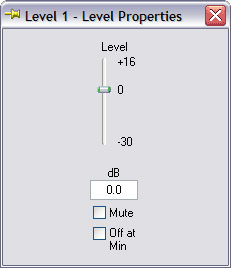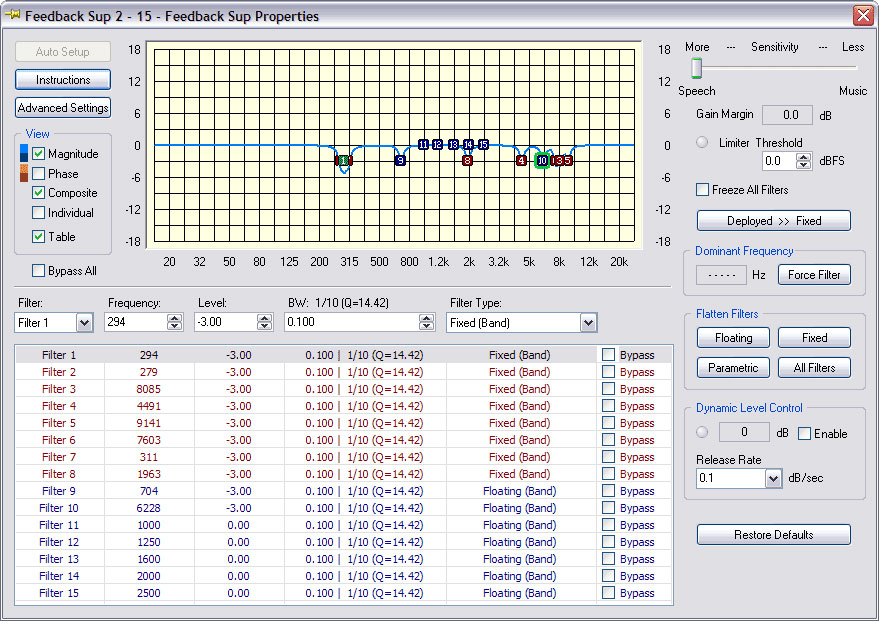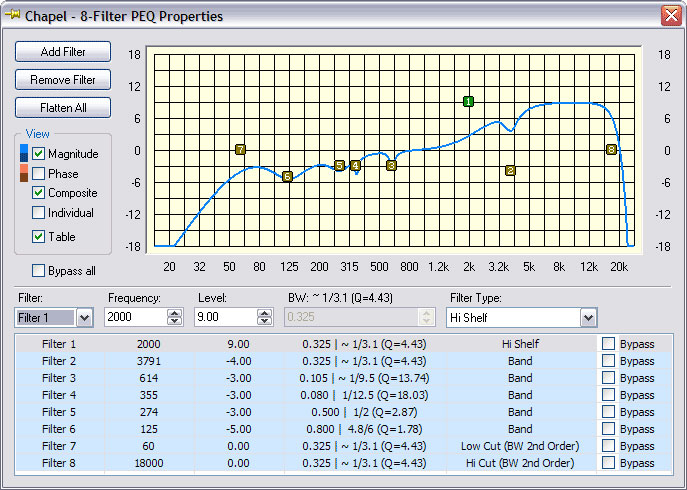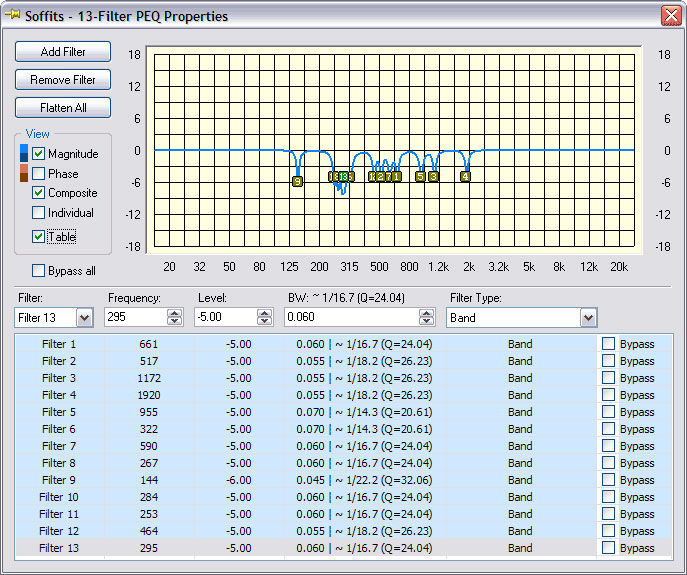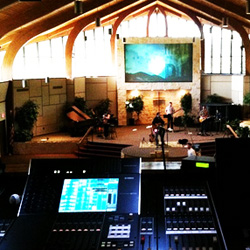
An Exciting Labor-Saving Tip:
Put a Control On the Wall
Here is an exciting tip: A level control can provide attenuation as needed under the control of a pot on the wall or a smart remote.
This is handy in systems where a minister needs to run a system alone without the assistance of an audio specialist who is running a mixing board.
The remote can be located on or close to a pulpit which places control of the audio system at the fingertips of the minister.
The DSP control is shown in Figure 8.
Feedback Suppression:
A Gift From Above?
The next item in this processing chain is somewhat controversial. It is a feedback suppressor.
To some audio consultants. these are heresy!
The argument is that a properly calibrated system has no need of such a band-aid.
This is generally true, but there is one case when it is wise for an audio consultant to suffer the ignominy of using a feedback suppressor (Figure 9)—a lay clergy where the person speaking is untrained and/or unfamiliar with proper use of a microphone.
The author has witnessed such a person cup their hands (in the attitude of prayer) directly around the microphone capsule.
The hands form a resonant chamber that results in squealing feedback.
A good feedback suppressor would have locked on to the offending tone and notched it out post-haste.
Parametric Equalization:
Now We’re Having Real Fun
Parametric equalizers are used for both wide and narrow band corrections. Generally, wide-band and shelf filters can correct for minimum-phase frequency response irregularities.
One interesting detail of Figure 10 is Hi-Shelf Filter 1. This filter was added after achieving flat in-room response. Since the system was calibrated in an empty room, this extra high-frequency energy is intended to compensate for the high-frequency absorption of the congregation when the room is full of people.
There is also a noise-masking effect in some congregations that will tend to obscure the intelligibility of the spoken word.
In practice this approach of adding a bit of extra high-frequency energy into the room works well.
Narrow-band filters (see Figure 11) are useful to partially correct non-minimum-phase related problems such as energy stored in room modes.
At low frequencies this energy causes bass to sound indistinct, and in midrange to lower treble this energy is perceived as reverberation.
These filters attenuate the frequencies that bounce about the room. In an acoustically live room, room resonances can propagate for a surprisingly long time causing these frequencies to “build up.”
Narrow-band filters are just a partial solution. Greatest effectiveness is achieved when filters are used in conjunction with acoustic room treatments such as diffusers, high/mid frequency absorbers and bass traps.

